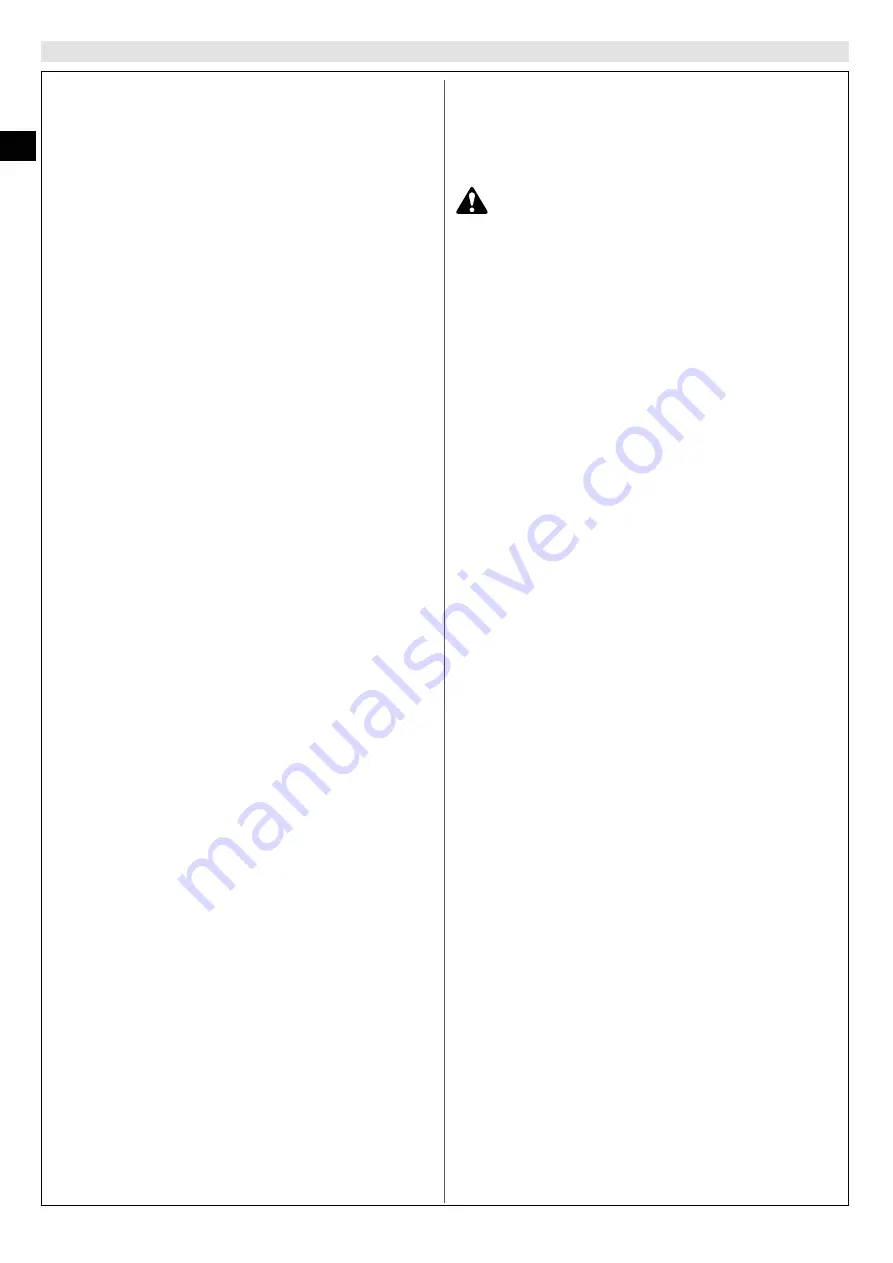
28
GB
used wrongly or without attention.
We advise that the machine be used by trained
people (licensed) and have carefully read the user
instructions written on the container.
WARNING: Certain spray products,
particularly high-concentration ones,
can react aggressively with the machine
components. For more information on the
characteristics of the products used, contact
the after-sales service for the spray products
in question.
NORMS TO FOLLOW FOR THE USAGE OF
CHEMICAL PRODUCTS
Damage and injury prevention methods
- Careful stocking, in secure places with denied
access to strangers and children.
- Handle products with care wearing antiacid
rubber gloves, protective glasses – face masks
or protective helmets, water-repellent or TIVEK
overalls, rubber boots or similar.
- In case of eye contact or ingestion of chemical
products or mixture consult a doctor, and take
the nameplate of the product ingested with
you.
- Garments that come in contact with chemical
mixture being pure or diluted, must be carefully
washed before being re-used.
- Do not smoke, drink and eat during the
preparation or distribution of the mixture, and
also near to or inside plots of ground already
treated.
- Treat plots of ground respecting safety
distances from neighborhoods, watercourses,
roads, sports centers, public greens or paths of
public use.
- Empty chemicals containers should be rinsed
out repeatedly with clean water, dried, and put
into special plastic disposal bags. The rinse
liquids can be used subsequently for the crop
treatment.
- Empty containers must be taken to designated
collection centres, in accordance with national
statutory regulations and local bylaws.
Containers must never be dumped or disposed
of as normal refuse, and must not be reused for
any other purpose.
- Liquids containing grains or consistent solids
- Liquids food both animal and human
- Mixture of various non-compatible chemical
products
- Solid fertilizer liquids or in suspension, with
crumb and/or very dense
- Liquids with temperatures higher than 40°C.
- Products that do not pertain to the specific use
of the machine.
- Do not use the mist blower to put out fires.
The mistblower is not a fire extinguishing
device.
RULES OF COURTESY
- Observe local bylaws and regulations
regarding the times when mistblowers can be
used. Do not operate the machine in early
morning or late afternoon and evening.
- Check the direction and strength of the wind.
Do not direct the jet at people, animals, motor
vehicles or dwellings.
- Do not blow debris toward open windows or
doors.
- Be permanently watchful for persons passing
close by.
- Do not leave the mist blower running when
unattended.
- Use the lowest throttle setting possible for the
job in hand.
DUST SUPPRESSION
- Do not use the mist blower to move excessively
dusty or powdery materials.
- Do not direct the air jet at the following
materials:
· Large quantities of gravel or powdery
aggregate
· Building site debris
· Gypsum powder
· Cement and concrete dust
· Dry garden surface dust
· Burning material
· Silicate powders
· Materials containing asbestos
USE OF CHEMICAL PRODUCTS
All pesticide or herbicides products can be
harmful both to man and to the environment if













































